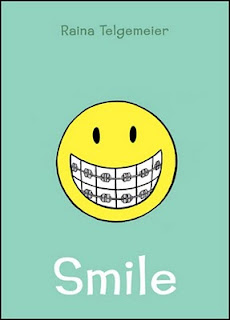Still life and bread crumbs, by Anna Quindlen, is a recent novel that moves at a comfortable pace, fully engaging the reader with characters whose lives seem to follow a script of diminished expectations, which we recognize from our own experience of the world, but the characters seem unique enough to maybe prove us wrong. At the same time, we might feel it would not be very literary if the writer allowed things to finish up too nicely, with our admired protagonist still on her feet unbowed by all the challenges, but if she doesn't exactly win, surely she must show some true grit. The so-called Hollywood ending. Think Rocky and on through Rocky-4. Unfortunately, we also have dark premonitions from reading the classics, think Anna Karenina or Madame Bovary, that everything is just going to turn out horribly. And yet, when done well, with a feeling of genuineness in plot turns and attention to intelligent language, it could turn out to be fine, and the reader might feel a little bit ennobled by the time spent with these characters. What actually does happen?
In Still Life... Rebecca had been a renown photographer in the art world and her work had been featured in galleries and covered by art critics nationwide. The title of the book is taken from one of her most famous photographs. However, her career has lately been in decline, she is now 60 yrs. old, and her agent hasn't been selling many of her photographs. With her income falling off, and the financial burdens of paying expenses for her mother in a care facility, while also attempting to help her son, Peter, a recent college graduate, she's beginning to become worried about solvency. Divorced from her philandering, Oxford-educated, professor husband since Peter was a boy, she needs to cut her living expenses--by renting out the expensive New York City apartment she owns and moving to a less expensive setting. Like this rustic rented cabin in rural upstate New York. The new place has been badly misrepresented to her and is quite primitive, but Rebecca is determined to see it through, at least for a while.
Like many such locales, it has its share of characters and they are mildly interesting. The gruff roofer, Jim, who helps her keep her house intact, becomes a fairly well-developed character and an interesting counterpoint to Rebecca's character. In addition to his trade, he's a volunteer environmental worker as well as a subsistence hunter--a unique combo, perhaps. Jim also has a bi-polar younger sister whom he is trying to help as she copes in survival mode at her trailer home nearby in the woods. A key turnaround experience for Rebecca occurs on her daily walks in the forest, where she begins to find strange little sites, each exhibiting crude wood crosses, accompanied by some small object, like a doll, or an athletic trophy, and she artfully records each of these sites on film. The mystery is eventually revealed, and the photo collection becomes a key to her reentry to her profession. Her relationship to Jim goes through several wrenching turns--he is sixteen years younger--but always the relationship seems so well done by the writer.
The author taps into a number of universal themes in constructing this story:
- A decline in professional recognition of a story character, whether in arts, business, or academia (usually in that order of severity) as she ages.
- The challenges to physical and mental well-being of a story character displaced into a very altered environment.
- An Autumn-Spring romantic relationship of two story characters.
- A social class hurdle existing between attracted story characters.








So glad to see this post. I recently reviewed a non fiction book called "Owning Up" which is part of the “Growing Up” series – a collection of books which are “about everyday situations in every child’s life, [and] show children ways of working things out together” - they cover similar ground to that in the psychology today article, but with NO imagination, and I lamented that good picture books can cover this issues so much better.If you're interested the review is at:
http://www.playingbythebook.net/2010/01/25/inventions-with-junk-modelling-nonfiction-monday/. Do you know this database:
http://mercury.educ.kent.edu/helpingbooks/home.htm
It's great for searching for picture books with themes like those covered in your post.